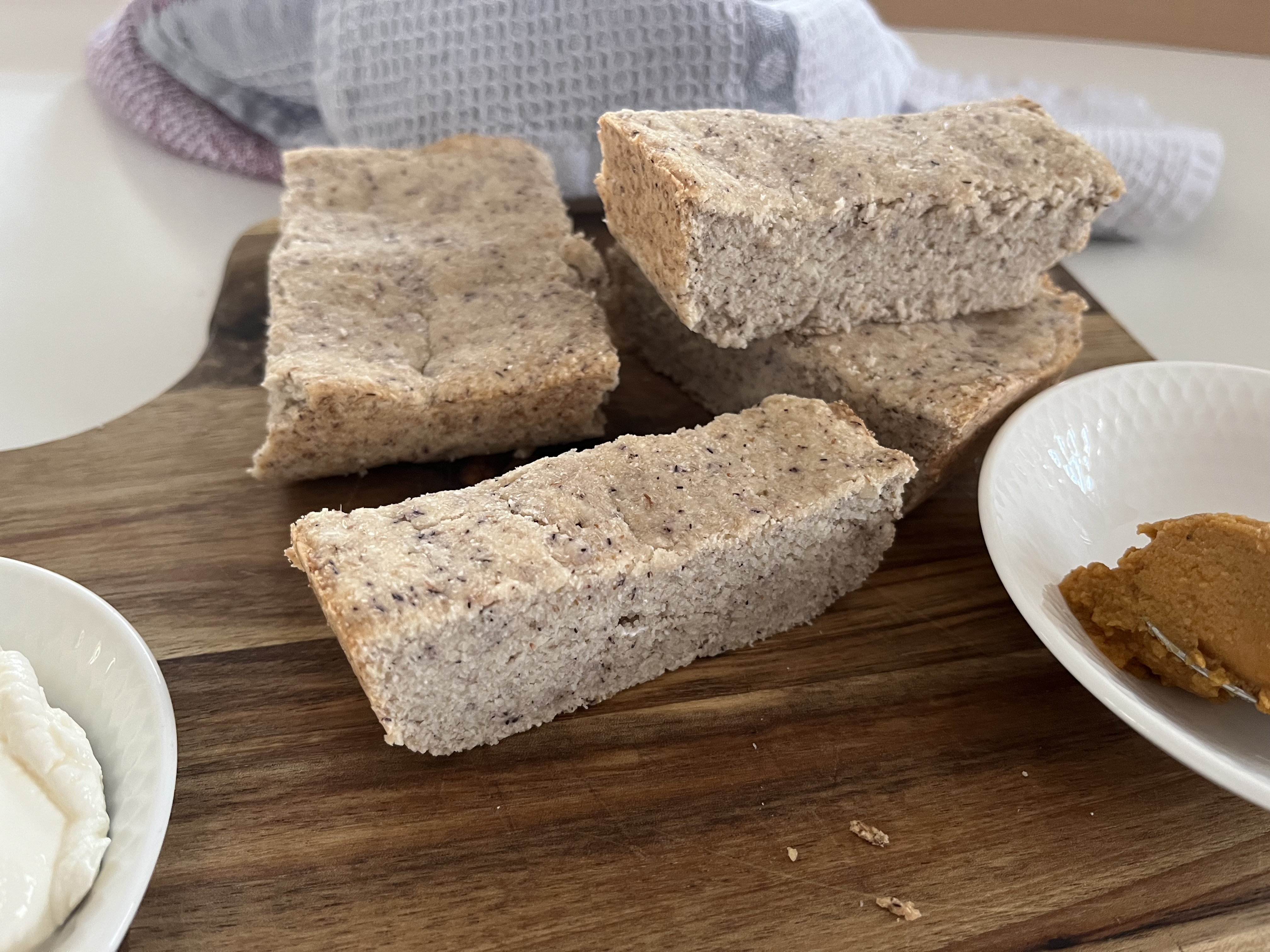 |
Nature’s Dessert Cookbook: Healthy, Delicious & Naturally Sweet Recipes Don’t want or can’t tolerate sugar alcohols and artificial sweeteners? This cookbook is for you! Every dessert is naturally sweetened with whole ingredients rich in fiber and protein, slowing sugar absorption and making them diabetic-friendly. It gathers your favorite recipes from the website—plus brand-new ones—all in one convenient place. Indulge in truly natural treats without compromise! |
 |
Diabetic Baked Goods: Everyday Bakes for Every Meal Diabetic cookbook designed to make healthy baking simple, accessible, and enjoyable. This collection of low-carb, high-fiber, and protein-rich recipes provides a reliable solution for those looking to enjoy diabetic bread and baked goods without blood sugar spikes. Every recipe includes a video tutorial, making it even easier to follow along and bake with confidence! |
 |
What Makes This Cookbook Different?
|
Cinnamon Chronicles: A Balanced View for Diabetics
Cinnamon has effortlessly earned its place in our kitchens, bringing a sweet-spicy warmth and irresistible aroma to countless dishes, especially desserts. Beyond its culinary appeal, cinnamon has garnered attention for its potential role in managing diabetes, making it a topic of interest for health-conscious individuals.
But what does science say about this popular spice? While research findings remain mixed, some studies suggest that cinnamon may support blood sugar regulation. Preliminary evidence indicates it could lower blood glucose levels in diabetic patients. Additionally, certain researchers propose that cinnamon enhances insulin sensitivity, enabling the body to utilize insulin more effectively.
It's important to approach these findings with caution. Studies on cinnamon's efficacy can vary in their conclusions, often due to differences in study designs, types of cinnamon used, and participant demographics1.
What is Cinnamon?

Cinnamon comes in two main varieties: Ceylon and Cassia. Ceylon is considered "true" cinnamon, with a milder, sweeter profile. Cassia, more common in the United States, bears a stronger, spicier taste. While both types have potential health benefits, Cassia contains higher levels of coumarin, which in large quantities can cause liver damage. Therefore, for frequent use in family recipes, Ceylon cinnamon is the preferred choice.
Also is important to use real cinnamon rather than cinnamon-flavored products, which can contain added sugars and lack genuine benefits. Real cinnamon sticks and pure ground cinnamon ensure you're getting the authentic spice in its most beneficial form.
For those with a sweet tooth dealing with diabetes, desserts can pose a real challenge. But here's where cinnamon shines. Not only does it enhance flavor, but it can also allow for reduced sugar or sugar substitute content without sacrificing enjoyment. A sprinkle of Ceylon cinnamon in desserts like apple crumble or homemade oatmeal cookies can transform them into diabetic-friendly delights.
Beyond taste, there are multiple potential cinnamon health benefits. It is packed with antioxidants, helping to reduce oxidative stress, which is elevated in diabetics. This protective property can contribute to lower inflammation levels, supporting overall health. These benefits make cinnamon a fantastic addition not just to desserts but also savory dishes.
As inviting as cinnamon's health benefits appear2, it should be a fragrant part of a comprehensive dietary approach. It's crucial to maintain a balanced diet rich in various fibers, proteins, and healthy fats.
Safe consumption levels are key to enjoying cinnamon's benefits without risking adverse effects. Generally, using cinnamon as a spice in cooking and baking is well within safe limits.
While the purported benefits of cinnamon for diabetes management can seem enticing, I think it's essential to always prioritize evidence-based practices. Consult your healthcare provider to ensure dietary choices support your specific health context, especially for children.
Why I Use Cinnamon?
Personally, I haven't observed any significant positive or negative effects of cinnamon on my son's blood sugar levels when I include it in my desserts. I tend to use it in moderation, as with all ingredients, and avoid incorporating it into our meals daily. One of the greatest benefits of cinnamon for me, apart from its ability to reduce the need for sweeteners, is its incredible aroma and flavor. Cinnamon has a way of elevating any dessert, making it more delightful.
Every bite of a cinnamon-enhanced treat doesn't just offer flavor but embodies a history of warmth and kindness shared across generations. Its presence in the diet reflects a blend of love, tradition, and health awareness.

One of my favorite ways to incorporate cinnamon is in a classic combination - with apples in various ways. This dessert feels indulgent but remains gentle on blood sugar levels. The warmth of the cinnamon complements the natural sweetness of the apple, creating a comforting treat we all love.
Cinnamon, in its natural form, is versatile. It pairs beautifully with a variety of fruits such as peaches, cherries, and pears, making it an excellent ally in creating diabetic-friendly desserts. Combining cinnamon with naturally sweet fruits can reduce the need for additional sweetener.
Creating and exploring new recipes with cinnamon can be a joyful experiment. Consider adding a cinnamon-infused twist to classic recipes. This experimentation not only offers delicious results but can also foster creativity and engagement in the kitchen.
For my son, who has diabetes, a delicious dessert brings genuine joy, and for me, the satisfaction comes from multiple aspects—the pleasure of crafting a healthy, flavorful recipe, the aroma that fills the kitchen, and the happiness on the faces of those who enjoy it. This combination creates what I like to think of as a "circle of joy," which, in itself, is a benefit that goes beyond any specific health claims about cinnamon.
Whether you're a mother or managing your own dietary needs, let cinnamon bring joy to your kitchen adventure. Through kitchen experimentation and shared cooking experiences, this sweet spice proves to be an invaluable ally in the journey of managing diabetes, one delightful dessert at a time.







